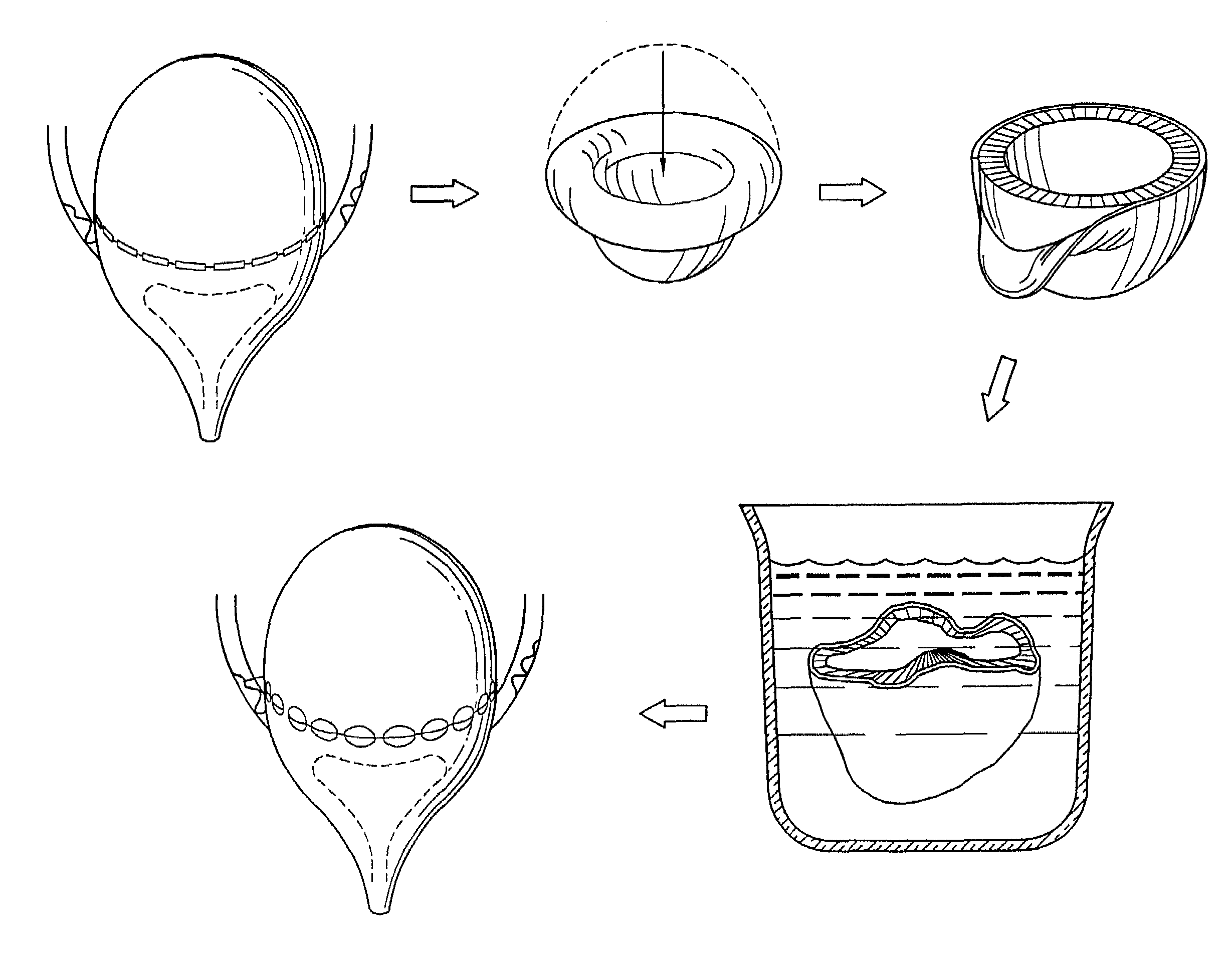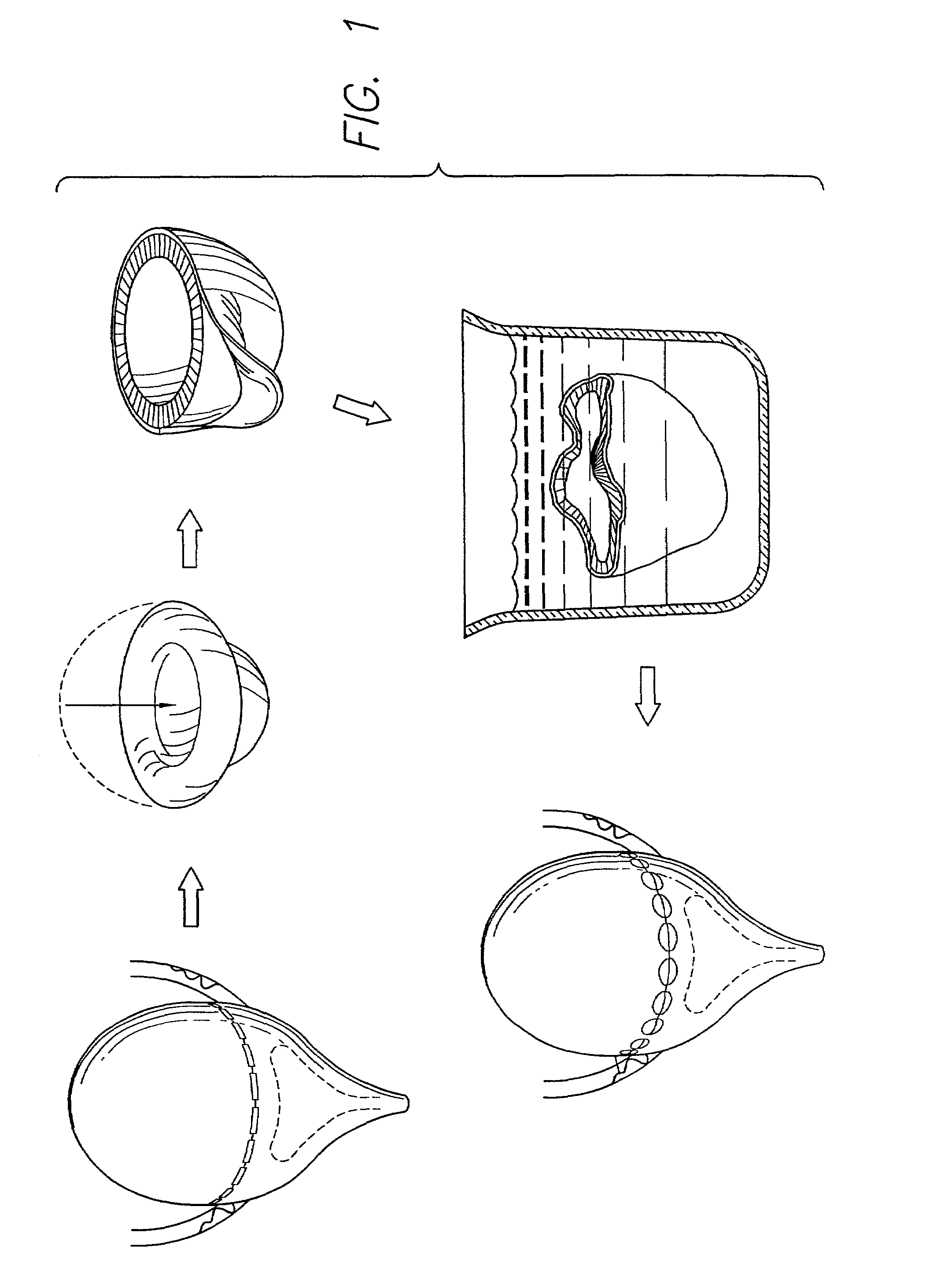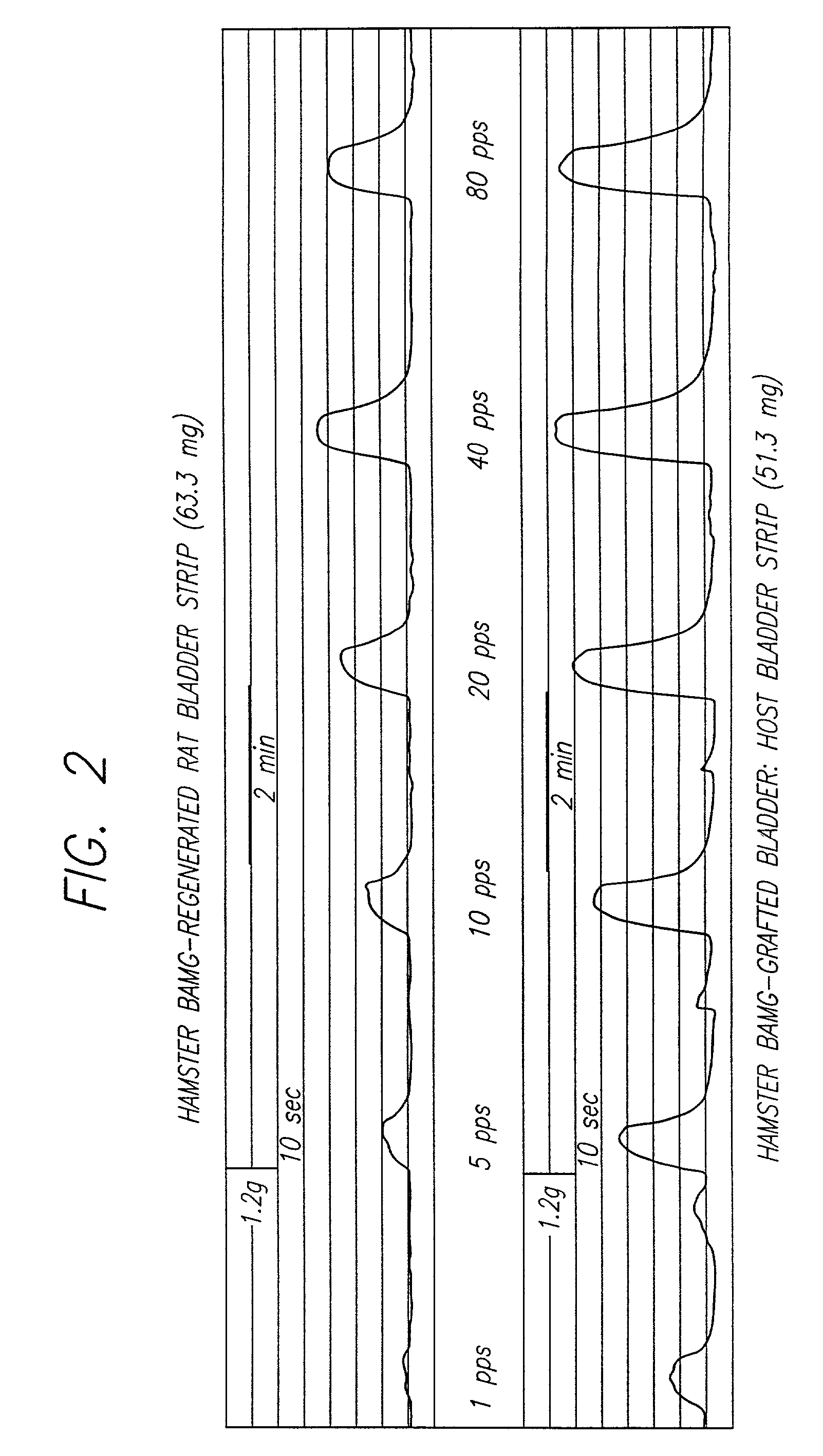Acellular matrix grafts of collagen and elastic fiber
a technology applied in the field of acellular matrix grafts of collagen and elastic fiber, can solve the problems of stone formation, collapse, rejection, extrusion and migration of grafts, and inability to support normal micturition, so as to promote the regeneration of bladder tissue and restore bladder function
- Summary
- Abstract
- Description
- Claims
- Application Information
AI Technical Summary
Benefits of technology
Problems solved by technology
Method used
Image
Examples
example 1
[0057]This example illustrates the preparation and characterization of bladder acellular matrix grafts from rat, pig and human bladders.
1.1 Bladder Isolation
[0058]Urinary bladders without the trigone were harvested from fresh rat (female, age 5 months, N=20) and pig (female, age 9 months, N=3) and a female human cadaver (age 65 years). The pig and human bladders were longitudinally bisected; half was assigned for matrix preparation, and the other for control. The rat bladders were not bisected; 10 were assigned to each group.
1.2 Acellular Bladder Matrix Preparation
[0059]In the matrix preparation process, urinary bladders were placed in Petri dishes containing 50 mL of 10 mM phosphate-buffered saline (PBS, pH 7.0) and 0.1% sodium azide. The bladders were inverted and the mucosa was scraped off with a pair of glass slides. The remaining lamina propria and detrusor muscle were treated with 50 mL of 10 mM PBS—0.1% sodium azide and stirred for 5-6 hours to obtain partial cell lysis. Blad...
example 2
[0073]This example illustrates the decreased antigenicity of the bladder acellular matrix graft (BAMG) through xenotransplantation and also evaluates the in vivo and in vitro functional properties of the BAMG-regenerated rat urinary bladder.
2.1 Preparation of the Bladder Acellular Matrix Graft (BAMG)
[0074]Bladders from male Syrian hamsters, male New Zealand white rabbits, and male mongrel dogs were obtained from our institutions' tissue-sharing program. The bladders were excised and treated essentially as described in Example 1. The hamster BAMGs were used as full-bladder-size grafts, whereas rabbit and dog BAMGs were cut to smaller patches of approximately 5×5 mm before grafting.
[0075]Histologic sections were examined by light and scanning electron microscopy before grafting to confirm the BAMGs' acellularity and thus the effectiveness of the matrix preparation process. These studies revealed an intact framework of collagen and elastin fibers with no evidence of remaining cells, nu...
PUM
| Property | Measurement | Unit |
|---|---|---|
| elastic modulus | aaaaa | aaaaa |
| elastic modulus | aaaaa | aaaaa |
| elastic modulus | aaaaa | aaaaa |
Abstract
Description
Claims
Application Information
 Login to View More
Login to View More - R&D
- Intellectual Property
- Life Sciences
- Materials
- Tech Scout
- Unparalleled Data Quality
- Higher Quality Content
- 60% Fewer Hallucinations
Browse by: Latest US Patents, China's latest patents, Technical Efficacy Thesaurus, Application Domain, Technology Topic, Popular Technical Reports.
© 2025 PatSnap. All rights reserved.Legal|Privacy policy|Modern Slavery Act Transparency Statement|Sitemap|About US| Contact US: help@patsnap.com



